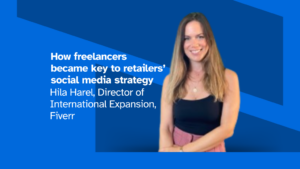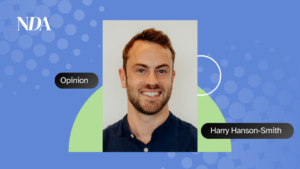New Digital Age interviews Prospect Knight Co-Founder Luke Knight on the dos and don’ts of acquisition and loyalty marketing today.
Marketers have long since focused on both acquisition and loyalty marketing – and rightly so. But too many have mostly done so in isolation meaning valuable advertising monies are wasted and the customer often lost in the chase, gone forever to be forgotten. NDA, in partnership with Prospect Knight, is publishing a series of articles looking at how marketers can break the silos, build meaningful relationships and bridge the gap between the two in order to deliver better for both business and audience.
The coronavirus pandemic has been our industry’s biggest wake-up call, according to Luke Knight, co-founder of Prospect Knight – and marketers must change their ways or face being irrelevant, or worse.
Knight believes that too few marketers have considered loyalty and acquisition marketing in tandem, meaning that now they face an uphill struggle to both attract and retain customers. This is particularly true in retail, hospitality and travel – all of which have particular challenges due to measures put in place to tackle the virus.
In an opinion piece published by NDA he says that we cannot blame all of the high street’s woes on the pandemic. “This is endemic of a wider retail malaise,” he writes. “Many brands only have themselves to blame. In the pursuit of profit over people many forgot the end customer – how not only to acquire them, but keep them loyal.”
He co-founded the customer marketing agency to help companies achieve just this – its philosophy built on the insight that building acquisition and loyalty marketing strategies together would achieve more than the sum of their incumbent parts.
That loyalty and acquisition marketing should go hand in glove rather than siloed is particularly important in times of crises, and when sales and margins are constricted and when the likes of Amazon are the obvious and easiest choice.
Knight continues: “COVID has shifted consumer behaviour overnight. Perhaps more importantly it has shone a light on the shortcuts and short-termism over the past decade. We’ve increasingly relied on clunky metrics and measurements, become hooked on price over value and in the pursuit of profit have perhaps forgotten our duty to our consumers.”
He advises advertisers to get back to their audiences – to know them inside out and to “respect” them, to pick up on positive behavioural cues rather than relying on unsophisticated CRM strategies.
It is about the symbiotic relationship between loyalty and ambition rather than siloed strategies, across channels including online advertising’s PPC, display, social advertising and remarketing, and CRM through email, SMS and direct mail.
Knight gives an example of a brand wanting to retarget through social advertising. “Too often it will just retarget everyone on their website – and that’s one of the biggest areas of junk in our advertising ecosystem.”
“A marketer should ask: why has that person been on the website and what did they do? Did they spend a few minutes browsing, did they add something to their baskets, did they checkout?”
Intent is the key. “If someone has added to a basket but not checked out, that’s a sign of interest. If they did buy the product, why waste your ad dollars retargeting them with that very same product for the next few weeks or months? There is a lot of wasted noise and money in digital advertising – and there’s no need to be.”
He urges marketers to consider their current audience bases regardless of whether they are customers or prospects and then push that information through to each of the teams and ensure the advertising is tailored to the person.
“It’s especially important at a time when third-party tracking cookies are crumbling,” Knight continues. “ First-party data is only going to grow in importance – consider how much more effective it is to target a customer who is in your email database, who has given you their mobile number, than an anonymous browser.”
Soon advertisers will be unable to carry out any retargeting based on website traffic because of stauncher regulations and continuous browser changes but anonymous does not always mean unknown. Advertisers, agencies and the ecosystem at large are having to change but Knight sees this as a positive – a chance for the industry to focus on people over pixels.
And that starts with knowing your audience – a base to help practitioners find lookalikes that are likely to convert.
He believes that personalisation has been something of a myth in the industry for some time – that hallowed one-to-one communication, but that the solution is more nuanced than that. When targeting works is when it improves the experience – for instance, tailored content on the BBC, or a retailer that knows what you browsed last and surfaces an experience based on that.
It’s how brands can ensure that they not only acquire customers but retain them. Bought the scarf – how about a hat, or a jumper too? You’ve bought the car, but how about a roof rack? Having holidayed in Bali several years ago you might be interested in a Covid-compliant SE Asian destination for your next vacation.
Concludes Knight: “Care about your customers and what they want next and they’ll care more about you.”









